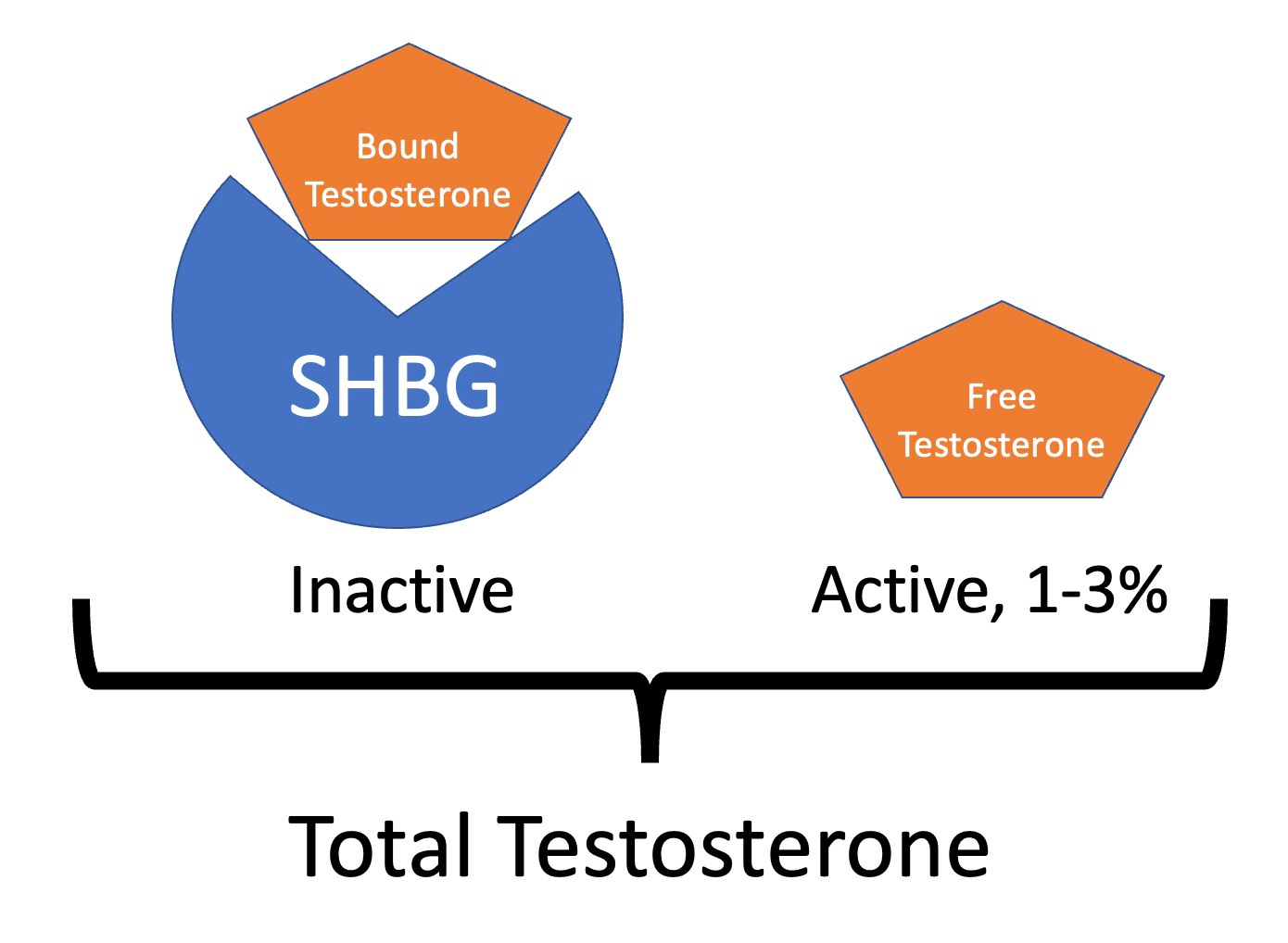Sex Hormone-Binding Globulin (SHBG)
What it is, and how to optimize for more free testosterone
What is SHBG and what does it do?
As we discussed in Male Sex Hormones, Part 1, SHBG is a protein produced by the liver that binds to sex hormones (testosterone, DHT, and estradiol) and has the following two functions:
Transporting them through the blood
Regulating their activity (hormones that are bound to SHBG are inactive)
As mentioned in the prior article, the majority of your testosterone is bound to a protein called sex hormone-binding globulin (SHBG), leaving only 1-3% of your total testosterone available in the active form.
Lab range
The normal range for SHBG is typically listed as anywhere from a lower limit of about 5-20 up to 55-120+, and is measured in nmol/L. The optimal range that I suggest is typically 20-40 nmol/L.
Unlike hormones such as testosterone, estradiol, and cortisol which peak in the early morning after waking, there is no significant effect of time of day on SHBG levels, and fasting
High levels of SHBG result in lower levels of free testosterone
Because higher levels of SHBG result in increased binding of testosterone, this results in less free testosterone available to exert its effects.
Because of this, having a SHBG level significantly above the optimal range can result in symptoms of low testosterone.
A few example, using the online calculator mentioned in the prior article:
Total testosterone of 1000 ng/dL with SHBG 30 nmol/L = free testosterone of 25.6 ng/dL (optimal range 24+)
Total testosterone of 1000 ng/dL with SHBG 80 nmol/L = free testosterone of 12.8 ng/dL (suboptimal)
This example illustrates why we really want to optimize SHBG as much as possible.
Factors that raise SHBG
Keep reading with a 7-day free trial
Subscribe to BowTiedLoon’s Newsletter to keep reading this post and get 7 days of free access to the full post archives.



